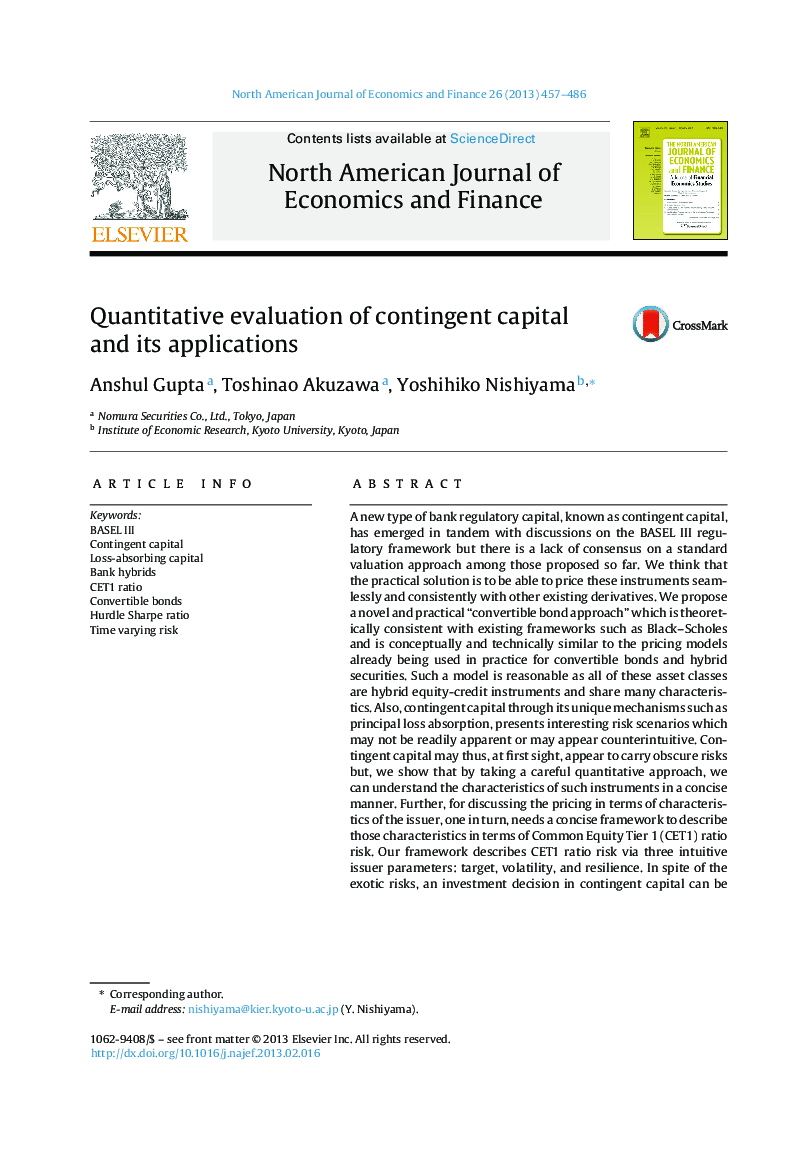| Article ID | Journal | Published Year | Pages | File Type |
|---|---|---|---|---|
| 973380 | The North American Journal of Economics and Finance | 2013 | 30 Pages |
A new type of bank regulatory capital, known as contingent capital, has emerged in tandem with discussions on the BASEL III regulatory framework but there is a lack of consensus on a standard valuation approach among those proposed so far. We think that the practical solution is to be able to price these instruments seamlessly and consistently with other existing derivatives. We propose a novel and practical ⿿convertible bond approach⿿ which is theoretically consistent with existing frameworks such as Black⿿Scholes and is conceptually and technically similar to the pricing models already being used in practice for convertible bonds and hybrid securities. Such a model is reasonable as all of these asset classes are hybrid equity-credit instruments and share many characteristics. Also, contingent capital through its unique mechanisms such as principal loss absorption, presents interesting risk scenarios which may not be readily apparent or may appear counterintuitive. Contingent capital may thus, at first sight, appear to carry obscure risks but, we show that by taking a careful quantitative approach, we can understand the characteristics of such instruments in a concise manner. Further, for discussing the pricing in terms of characteristics of the issuer, one in turn, needs a concise framework to describe those characteristics in terms of Common Equity Tier 1 (CET1) ratio risk. Our framework describes CET1 ratio risk via three intuitive issuer parameters: target, volatility, and resilience. In spite of the exotic risks, an investment decision in contingent capital can be justified if a sufficient return is expected in compensation. In this paper, we present a valuation method based on hurdle Sharpe ratios that has direct implications for investment decision making in the context of expansion of investor's efficient frontier. We also demonstrate the usefulness of our framework as a daily pricing tool for market participants using empirical market data.We appreciate helpful comments from an anonymous referee and the editors of North American Journal of Economics and Finance. The view expressed are those of the authors and do not necessarily reflect views and policies of Nomura Securities.
